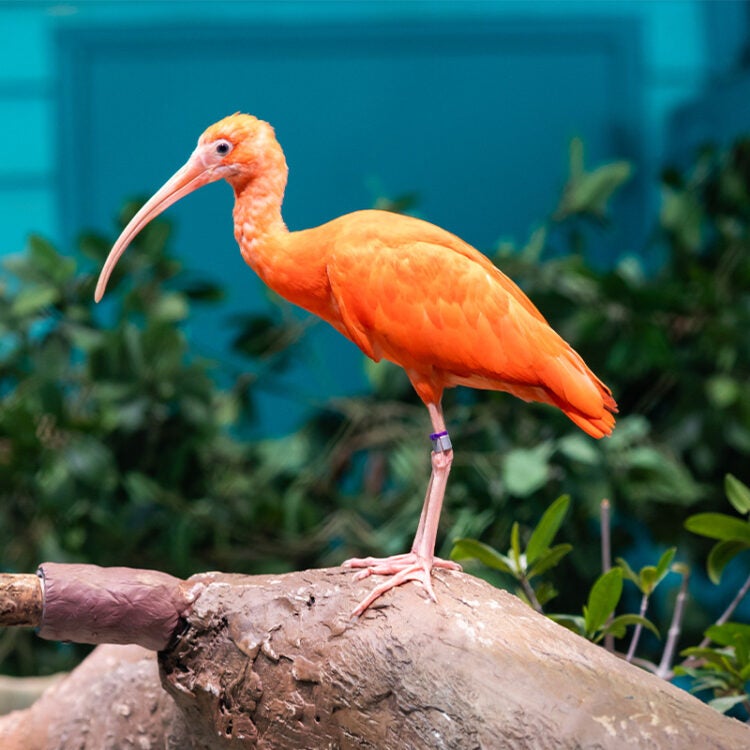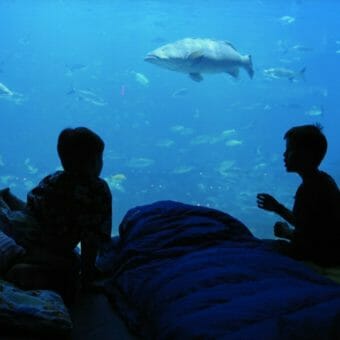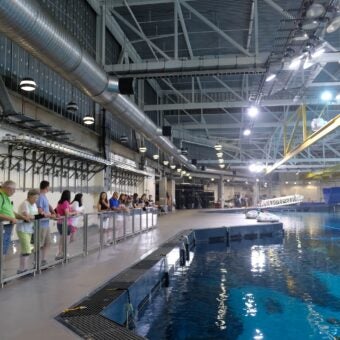-
Size
2.2 lbs (1 kg), 30 inches (76 cm) long -
Diet
Small fish, crustaceans, mollusks, worms and insects -
Range
South America and occasionally Florida -
Habitat
Coastal areas and wetlands
Physical Characteristics
- Bright red to pink in color with long legs, necks and beaks. Usually have a darker blue or black color on wing tips.
- Typically weigh around 2.2 lbs (1 kg) or less and are about 30 inches (76 cm) long.
- Juveniles are duller in color, typically a grey-brown color with a white underside.
Animal Fun Fact
Adults will make a “honking” noise as a form of communication.
Diet / Feeding
- Diet consists of small fish, crustaceans, mollusks, worms and insects.
- Uses long beak to search water for food and to peck surfaces for other prey items.
Range / Habitat
- Occurs throughout South America and is occasionally seen in Florida.
- Seasonal shifts and migrations move this bird between coastal environments and interior wetlands.
Reproduction & Growth
- Males may use preening, shaking, bill popping, head rubbing and high flights in mating rituals to attract females.
- Utilizes a colonial or social breeding system where nests are built close together, often in the same tree. There are typically 3-5 eggs per nest and will hatch after 19-23 days. Chicks will typically become independent after about 75 days.
- Parents share parenting responsibilities, alternating during the incubation period.
- Polygynous species, males will mate with multiple females.
Conservation Status
- “Least Concern” on IUCN Red List.
Additional Information
- Highly social animal, not just with breeding, but also for foraging.
- This species is vulnerable to predation by large cats which is another reason they stay in large groups.
- Life expectancies can vary greatly for this species between native habitats (usually 15 years of age) and zoo or aquarium settings (25-30 years of age).







